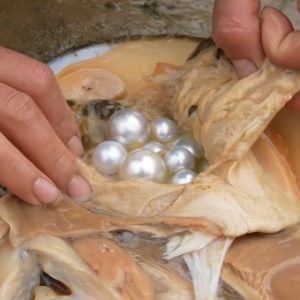The Art of Cultivating Pearls: From Harvest to Authenticity
Pearls, with their understated elegance and timeless charm, have captivated humanity for centuries. These gems of the sea, born from the defense mechanism of an oyster, are treasures that speak of sophistication and grace. The journey from cultivation to distinguishing genuine pearls from their counterparts is both an art and a science.
The Cultivation Process
Pearl cultivation is a meticulous process that marries the forces of nature with human ingenuity. It begins with the selection of oysters, which are then gently opened just enough to insert a nucleus, typically a bead or a piece of mantle tissue from another oyster. This intrusion is the irritant that compels the oyster to start producing layers of nacre, a smooth, lustrous substance that forms the pearl. This process can take anywhere from several months to several years, depending on the type of pearl being cultivated.
Pearls are primarily harvested in the waters of Japan, China, and the South Pacific, with each region specializing in different types of pearls. For example, Akoya pearls are primarily cultivated in Japan, known for their round shape and luster, while the South Pacific is famous for large, luminous Tahitian pearls.
Identifying Genuine Pearls
Distinguishing real pearls from imitations requires a keen eye and knowledge of certain characteristics unique to pearls. Here are a few tips to help identify authentic pearls:
- Luster: Genuine pearls have a deep, radiant glow from within, rather than merely a superficial surface shine. The luster of real pearls is unmistakable; they should reflect light beautifully and have a warm glow.
- Surface Imperfections: Because pearls are natural creations, most will have some form of imperfection when examined closely. These can include tiny pits, bumps, or irregularities in shape. Perfectly round and flawless pearls are rare and often command higher prices.
- The Tooth Test: This is a simple, if not entirely elegant, test for authenticity. Gently rub the pearl against the edge of your teeth. Real pearls have a slightly gritty texture, due to the layers of nacre, whereas fake pearls, being smooth and glass-like, will feel entirely smooth.
- Weight: Genuine pearls have a noticeable heft to them when held. Imitation pearls, often made of plastic or glass, tend to be significantly lighter.
- Temperature: Real pearls usually feel cool to the touch initially and warm up with your body temperature. Fakes, on the other hand, will not exhibit this natural temperature change.
Conclusion
Pearls offer a unique allure, a combination of natural beauty and refined elegance. Understanding the intricate process of their cultivation and learning how to identify genuine pearls can enhance your appreciation of these precious gems and ensure that you make informed decisions when adding to your collection. Remember, the beauty of a pearl lies not just in its luster, but in the story it carries from the depths of the waters to becoming a cherished piece of jewelry.


